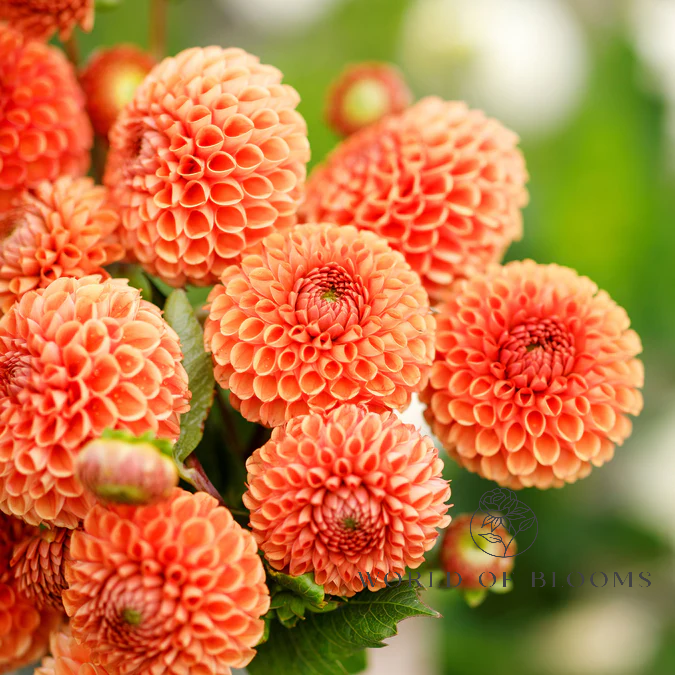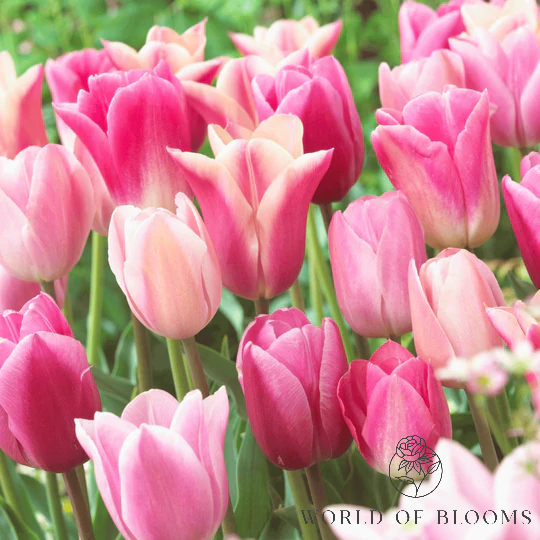Dahlia Ball 'Cornel Bronze'
Couldn't load pickup availability
Dahlia 'Cornel Bronze' is a striking and unique variety of Dahlia that is known for its rich, warm-toned flowers and impressive blooms. Here’s a detailed description of this stunning Dahlia:
Zones: 3 - 11
General Characteristics:
- Flower Type: Ball-shaped Dahlia
- Bloom Size: Medium to large, typically around 4 to 6 inches (10–15 cm) in diameter.
- Bloom Form: The flower is tightly packed with petals that curve inwards, creating a full, rounded appearance characteristic of ball Dahlias.
- Petal Color: The blooms of Cornel Bronze are notable for their rich, warm, and vibrant hues. The petals are primarily a deep, golden bronze color, with subtle variations in shade that can range from soft amber to a slightly darker, rust-toned bronze. This gradient gives the flowers a sophisticated, almost metallic sheen, especially under sunlight.
Growth Habit:
- Height: The plant grows to a height of around 3 to 4 feet (90 to 120 cm), making it a relatively tall variety that works well in the middle or back of garden borders or flower beds.
- Spread: It has a compact, bushy growth habit, with branching stems that support the large, rounded blooms.
- Stem: Sturdy and upright, the stems of Cornel Bronze dahlias are capable of supporting the sizable blooms without requiring staking, though in very windy conditions, staking might be beneficial.
Growing Conditions:
- Sunlight: Like most Dahlias, Cornel Bronze requires full sun for optimal flowering. It thrives in locations that receive at least 6 to 8 hours of direct sunlight each day.
- Soil: Prefers well-drained, fertile soil with a slightly acidic to neutral pH (6.0 to 7.0). Well-prepared soil with organic matter ensures healthy growth and robust blooms.
- Watering: Needs regular watering, especially during dry spells. However, overwatering should be avoided, as dahlias do not like to sit in waterlogged soil.
Flowering Season:
- Bloom Time: Cornel Bronze is a late summer to fall bloomer, typically flowering from mid-summer until the first frost. This makes it an excellent choice for adding color to gardens when many other plants are starting to fade.
- Cut Flowers: The blooms are great for cutting and arranging. Their rounded, striking appearance makes them a favorite in floral displays, and their color holds up well when used in vases.
Unique Features:
- Color and Aesthetic: The distinctive bronze color of Cornel Bronze adds warmth and richness to any garden. The golden hue is perfect for autumn-themed gardens and pairs well with other warm-toned flowers, as well as purple, red, and deep green foliage.
- Hardiness: This dahlia is generally hardy in USDA zones 8 to 10, although gardeners in colder climates can grow it as an annual or dig up the tubers for winter storage.
Planting Instructions
1. Choosing the Right Location
Dahlias require specific growing conditions to thrive, so selecting the right spot is key:
- Sunlight: Dahlias love full sun. Choose a location that receives at least 6-8 hours of direct sunlight each day. The more sun they get, the better the blooming.
- Soil: Well-drained, fertile soil is essential. Dahlias do best in slightly acidic to neutral soil (pH 6.0 to 7.0). If your soil is heavy clay or drains poorly, amend it with organic matter (like compost) to improve drainage and fertility.
- Protection from Wind: Although dahlias are relatively tall and sturdy, they can be vulnerable to strong winds. Plant them in a sheltered spot to prevent breakage or damage to the flowers.
2. When to Plant Dahlias
Dahlias are warm-season flowers and should be planted once the threat of frost has passed and the soil has warmed up. In most regions, this means planting them in late spring, typically around late April to early May, after the last frost date.
- Soil Temperature: The ideal soil temperature for planting dahlia tubers is around 60°F (15°C). If the soil is too cold, the tubers may rot before they have a chance to sprout.
3. Preparing the Soil
Good soil preparation helps dahlias grow strong and healthy:
- Amend the Soil: Before planting, work compost or well-rotted manure into the soil. This adds nutrients and helps with drainage.
- Loosen the Soil: Dahlias have tubers that need to spread out, so make sure the soil is loose, not compacted.
- Add Fertilizer: Mix a slow-release balanced fertilizer or one specifically designed for flowering plants into the soil before planting to give your dahlias a nutrient boost.
4. Planting the Tubers
Once the soil is prepared, it's time to plant your dahlia tubers.
- Spacing: Dahlias should be spaced about 18-24 inches (45-60 cm) apart, depending on the variety. Taller varieties may need more space, while compact varieties can be planted a bit closer together.
- Planting Depth: Dig a hole or trench around 6 inches (15 cm) deep. Place the tuber in the hole with the "eyes" (small, bud-like protrusions) facing upward. If you’re planting multiple tubers, make sure there is enough room for the tubers to spread out as they grow.
- Orientation: If the tuber has a noticeable direction (like a flat side), plant it so that the eyes are facing upward. If unsure, it’s fine to plant the tuber sideways or with the flat side facing down.
- Covering: Gently cover the tuber with soil, and water it well after planting. Avoid burying the tuber too deeply; about 6 inches is ideal. The soil should be loose enough to allow the tuber to sprout easily.
5. Watering and Mulching
- Watering: After planting, water the area thoroughly to settle the soil around the tuber. Keep the soil evenly moist, but not soggy, while the tubers are establishing themselves. Once the plants start growing, they need consistent moisture, especially during dry spells.
- Mulching: Apply a thin layer of mulch around the plants to help retain moisture and suppress weeds. Organic mulch like straw, leaves, or grass clippings works well. However, avoid placing mulch directly on the tubers.
6. Staking or Supporting Dahlias
Dahlias can grow tall, especially larger varieties, so they may need support:
- Staking: To prevent the stems from flopping over, you can insert stakes near the plants and tie the stems loosely to the stakes. This is especially important for tall varieties or those with large flowers.
- Cages: Another option is to use a wire cage around the plant to provide support as it grows. This keeps the plant upright and the flowers undamaged by wind or rain.
7. Fertilizing and Care During the Growing Season
Once your dahlias are planted, it’s important to feed and care for them as they grow:
- Fertilizing: After planting, you can give dahlias a light dose of a high-phosphorus fertilizer to encourage blooming. Later in the growing season, switch to a balanced fertilizer or one that is lower in nitrogen. Over-fertilizing with too much nitrogen can result in lush foliage but fewer flowers.
- Deadheading: Remove spent blooms regularly to encourage new flowers and keep the plant looking tidy.
- Pruning: Prune the stems lightly to encourage branching. If you're growing large varieties, you may want to pinch off the top few buds to encourage bushier growth.
8. Aftercare and Harvesting
- Watering: Ensure that dahlias receive regular watering throughout the growing season, especially when the weather is hot and dry. The soil should stay moist but not waterlogged.
- Cutting Flowers: Dahlias are wonderful cut flowers! If you want to enjoy them indoors, cut them in the early morning or evening when they’re freshest, and place them in water immediately.
9. Overwintering Dahlias (for cold climates)
- Digging Up Tubers: In colder climates (zones 7 and below), you’ll need to dig up dahlia tubers before the first frost hits. Carefully lift the tubers with a spade or fork, being careful not to damage them. Trim the foliage and let the tubers dry for a couple of days in a cool, dry place.
- Storage: After drying, store the tubers in a cool, frost-free location, like a basement or garage, in a box with peat moss, sawdust, or sand to keep them dry. Check on the tubers periodically to make sure they haven’t rotted.





Recently viewed









